Weakened by insecurity, artists abandon their workshops to settle elsewhere in the capital or in the provinces, while others leave the country
Artistic communities, based in areas that are not easily accessible due to gang violence in the Port-au-Prince area, are facing major difficulties and are threatened with extinction.
Dozens of artists’ studios in Noailles, Grand-Rue, Carrefour and Bel Air are systematically targeted, ransacked or burned during gang attacks.
Most of the victims are among the best artists of their generation, and their work, exhibited in Haiti and around the world, represents the country’s artistic genius.
In 2023, Lionel Saint Éloi and Ricardo Valcin’s workshops in Carrefour-Feuilles were targeted.
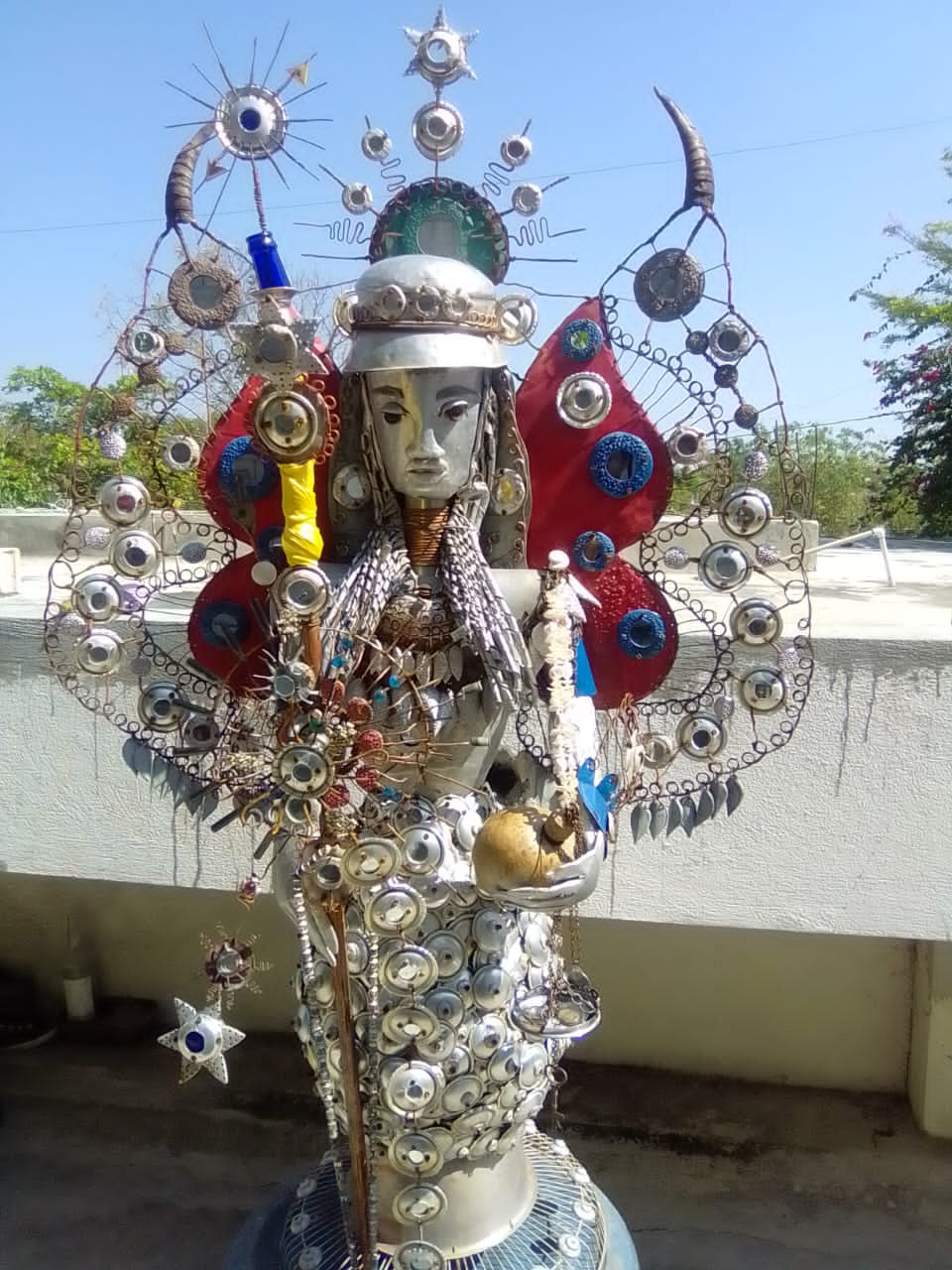
Sculpture by Ricardo Valcin. | © Ricardo Valcin
The previous year, in 2022, artists in Noailles were hit by a major fire in Croix-des-Bouquets.
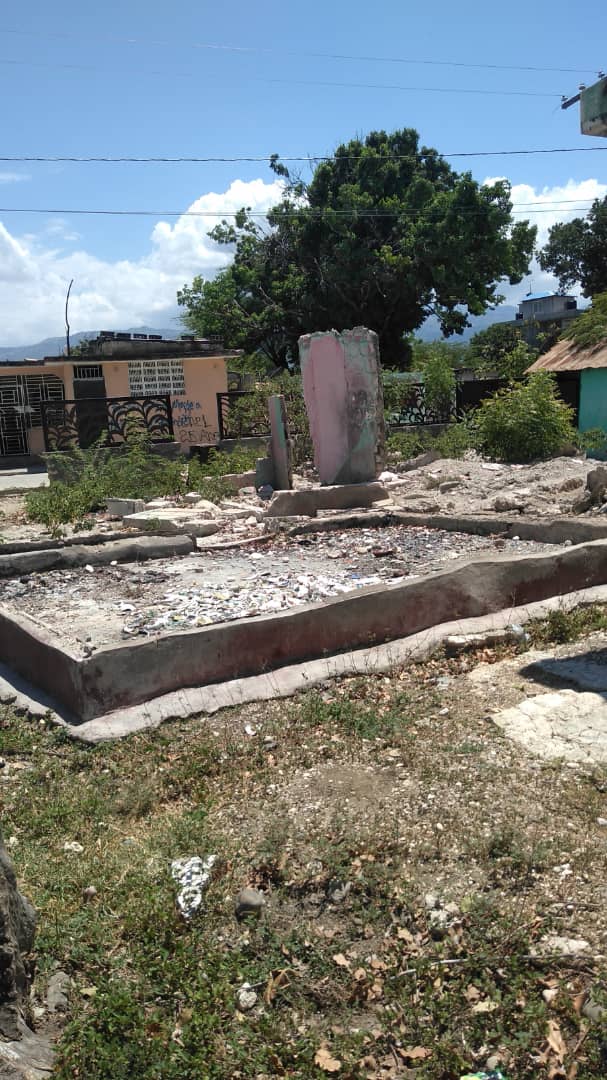
View of part of the Noailles workshops burnt down in 2022. | © Jean Eddy Remy
In 2020, artists from Grand-Rue, including Frantz “Guyodo” Jacques and several others, saw a large part of their collections disappear in the flames.
In October 2022, the artistic village of Noailles was the scene of nearly four armed attacks, the result of a conflict between Vitelhomme’s gang and 400 Mawozo.
As a result of these events, more than 20 houses and artists’ studios were reduced to ashes, subsequently leading to the desertion of the village.
Read also: Centenary documents under threat from gangs
Artist and sculptor Ricardo Valcin, who lives in Carrefour-Feuilles, reveals that he lost a large quantity of his works during a gang attack in September last year.
The professional resided near Impasse Saint Éloi, named after the multi-talented artist Lionel Saint Éloi, whose works are present in the permanent collections of the Waterloo Museum and the Center for the Arts (Centre d’Art).
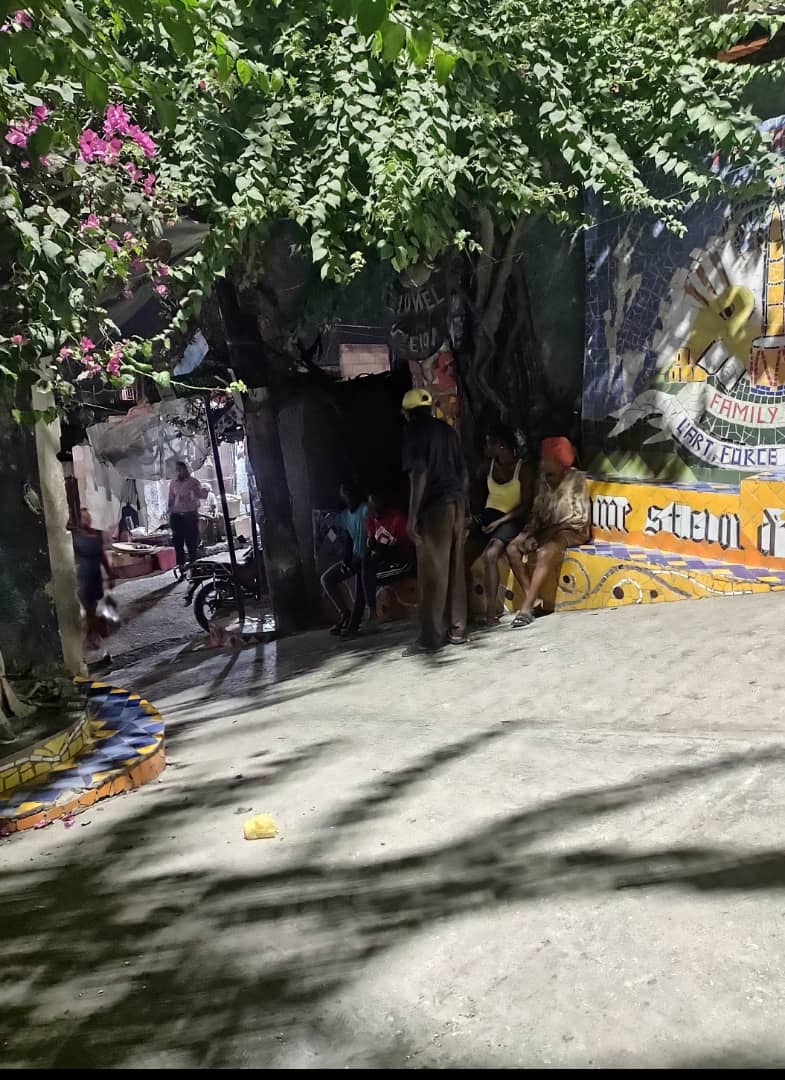
Impasse Saint Eloi in Carrefour -Feuilles before the gang attack. | © Ricardo Valcin
His workshop also suffered a fire.
Valcin only managed to recover pieces already sold, but not yet delivered to buyers.
“After moving those pieces to Delmas 33 and returning to Carrefour-Feuilles, my works were nowhere to be found. Some were destroyed or disappeared,” laments Ricardo Valcin.
Interviewed by AyiboPost, artists from targeted communities expressed concern for works left in areas under gang control.
After moving those pieces to Delmas 33 and returning to Carrefour-Feuilles, my works were nowhere to be found. Some have been destroyed or disappeared.
– Ricardo Valcin
André Eugène declares that he has no news of the 700 works (sculptures, paintings, etc.) stored in his workshop, shared with other artists on Grand-Rue.
The majority of these works date from 1998, the year Eugène began to recover.
Celeur Jean Hérard, emblematic figure of Atis Rezistans, a collective of artists based in Grand-Rue, has seen his sculptures exhibited at renowned events such as the 54th Venice Biennale and the Grand Palais in Paris.
Fearing that his works would be burned, Celeur had to transfer them to Thomassin.
“The idea of painting is unbearable for me, because I fear that if I start working and my place of residence becomes a lost territory, everything will be destroyed by fire,” Hérard confides to AyiboPost. “I prefer to leave the paintings as they are. I refuse to devote all my energy to a creation that risks being burned and lost,” he decides.
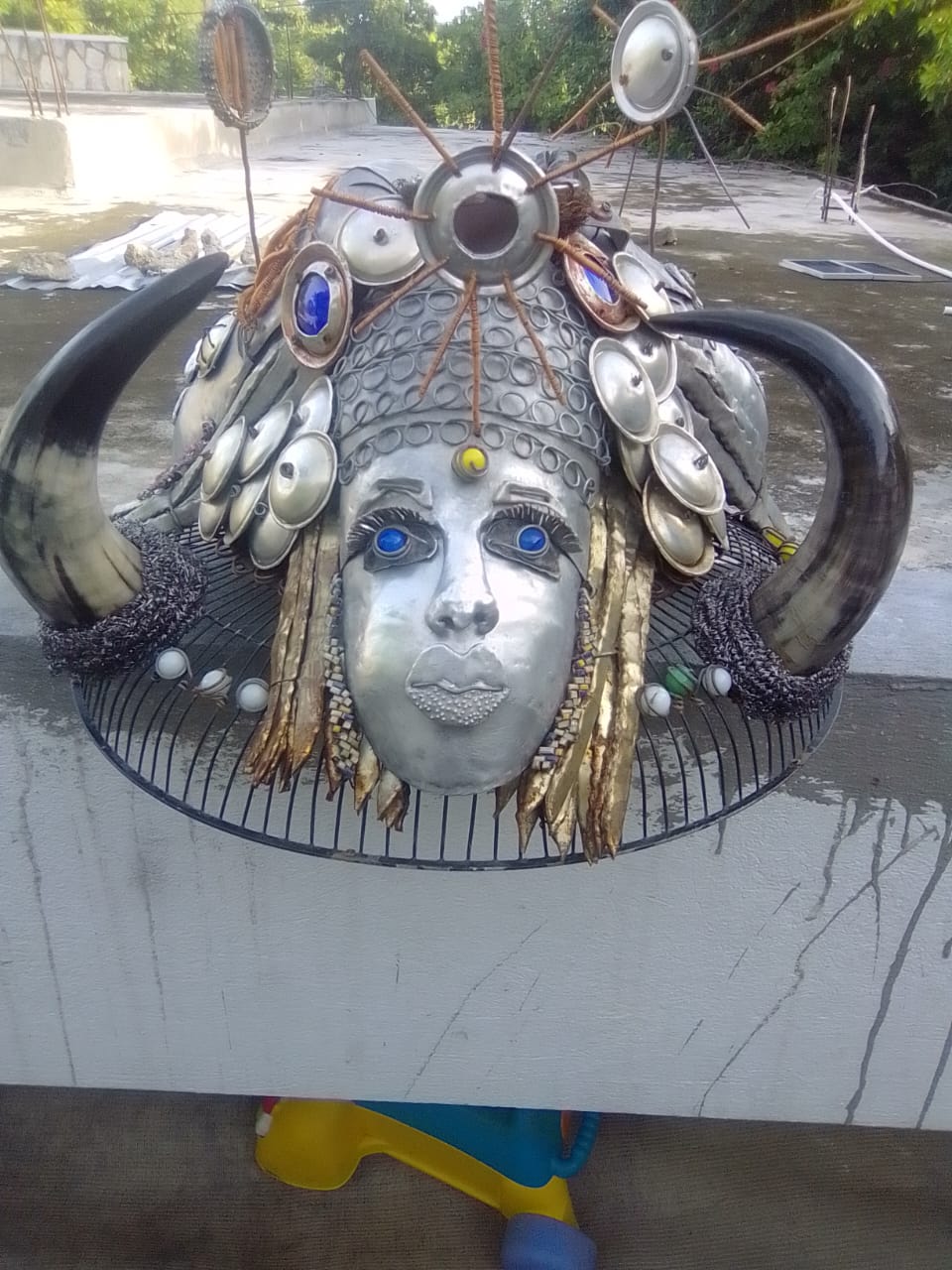
Ricardo Valcin’s work in Carrefour-Feuilles. | © Ricardo Valcin
The violence forces artists to abandon their studios, leaving behind tens of thousands of works of art, to resettle in other districts of the capital or even in other regions of the country.
Some choose emigration, a decision which endangers artistic communities.
André Eugène, founding member of the Atis Rezistans community, found refuge in Les Cayes with his family, fleeing the violence of the armed gangs which reign over Grand-Rue.
The artist left the area after a group of 40 armed individuals intruded broke into his home. They did not attack him, contenting themselves with occupying the courtyard, while outside, another group fired at the police tank parked a few kilometers from his home.
“After this incident, I said to myself, I have to go. I didn’t take anything. Not even my toothbrush. My entire collection remained at Grand-Rue,” recounts André Eugène to AyiboPost.
Currently, the artist is forced to use materials recovered from his environment in Les Cayes, to continue his work.
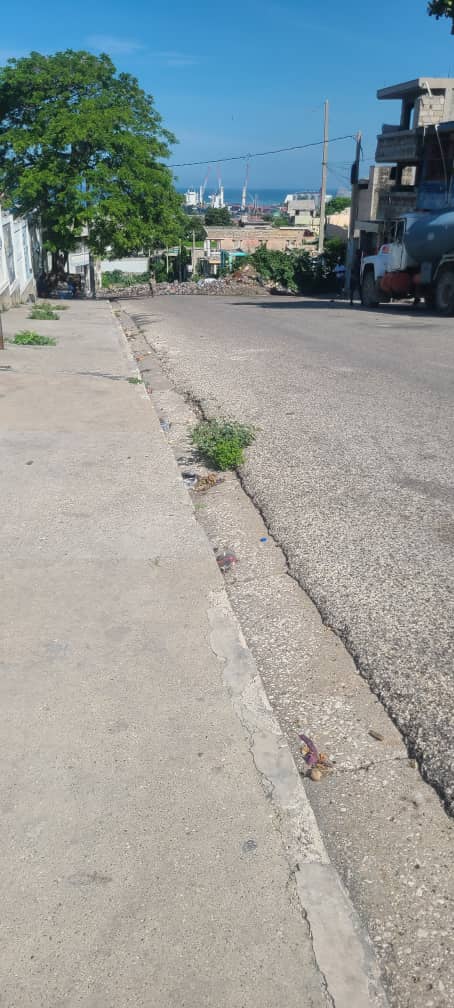
A street deserted in Bel Air due to the violence of armed gangs erecting barricades in the area.
Atis Rezistans emerged in the heart of Grand-Rue on Boulevard Jean-Jacques Dessalines.
This site, the final resting place for car wrecks, became a dump for old vehicles, serving as a demolition workshop for mechanics and spare parts dealers.
The Atis Rezistans community transformed the place into a vast open-air gallery.
Artists collect various materials to design impressive works and installations, exhibited along the boulevard. They offer art pieces (sculptures, paintings, installations, etc.) that are bold, aggressive and fascinating through the mastery of heterogeneous materials during assemblages.
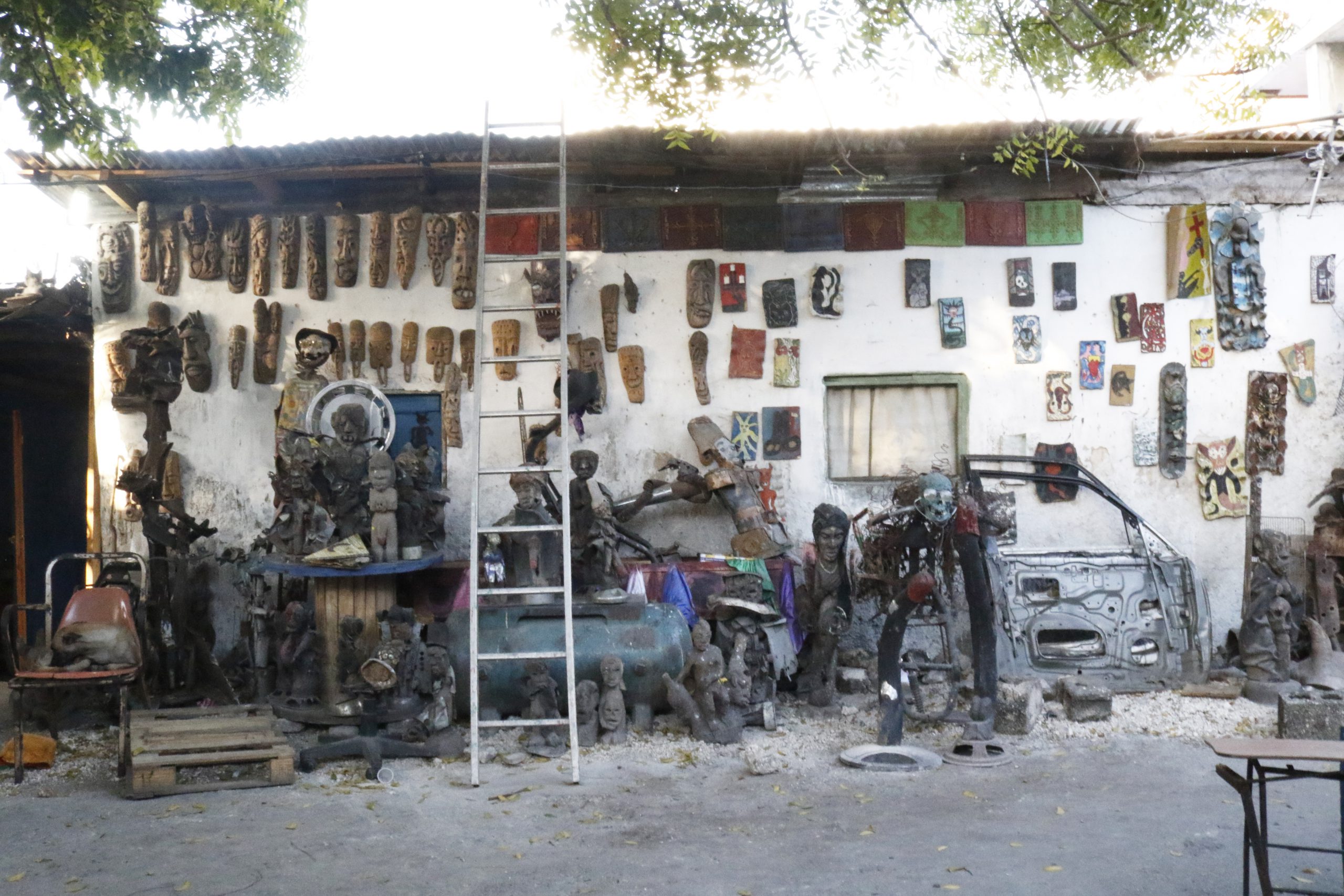
Works from the “Atis Rezistans” workshop in the heart of downtown, in Port-au-Prince, in 2020. | © AyiboPost
In 2022, despite the deterioration of the security climate and their working conditions, the Atis Rezistans group won the Exhibition of the Year prize at Documenta Fifteen, awarded by the International Association of Art Critics (AICA) of the German region for a remarkable installation inside the Saint-Kunigundis church.
Read also: Meeting the CCC-uniQ, committed to the restoration of Haitian art
Located in the heart of 400 Mawozo territory, the artistic village of Noailles is recognized as one of the main artistic centers of the Caribbean.
Its artisans shape and create iron works cut from old metal barrels.
This tradition dates back to the 18th century when Noailles was a sugar settlement and required the know-how of blacksmiths.
There we find one of the oldest artists’ workshops, the Bruno Brothers forge, which has existed since 1802, making Noailles one of the oldest artistic villages in the Caribbean.
The artistic village of Noailles has nearly 500 artists and craftsmen out of a population of around 2,000 inhabitants, according to a document written by the Association of Artists and Craftsmen of Croix-des-Bouquets (ADAAC).
In 2019, the Ministry of Culture included the practice of iron cutting (fer découpé) in the national inventory of intangible cultural heritage.
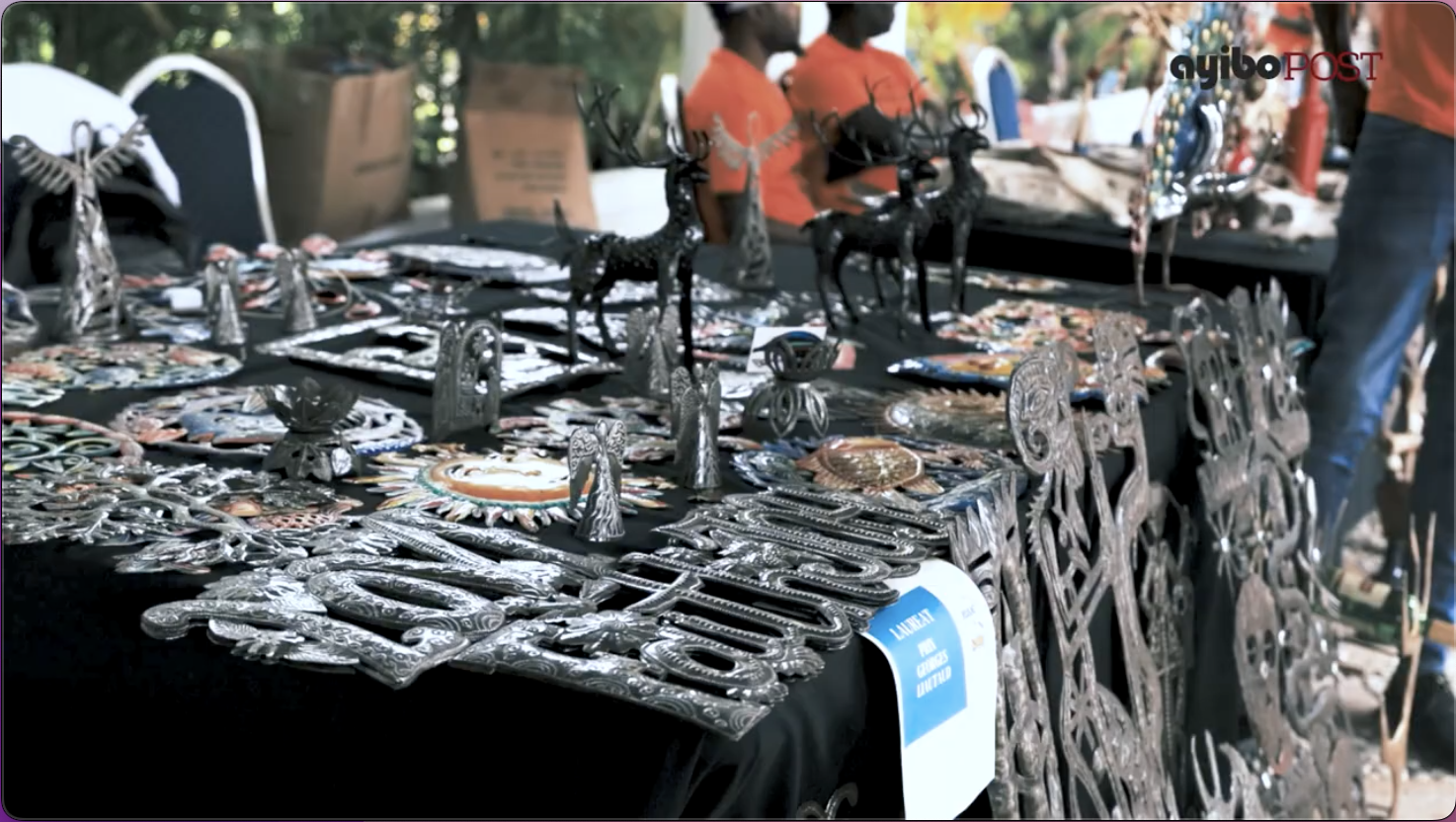
Cut iron works by artists from the Noailles Artistic Village exhibited during the first edition of the “Solidarité Noailles” fair at the El Rancho Hotel in Pétion-Ville, on May 17 and 18, 2022.| © AyiboPost
The artistic village began in 1953. Dewitt Peters, one of the founders of the Center for the Arts, discovered sculptor Georges Liautaud, known for his cut iron crosses adorning tombs. Peters encouraged Liautaud to create new pieces from this metal. The sculptor gathered other apprentices around him, who went on to be renowned artists in their own right.
Read also: The Haitian Society of History, Geography, and Geology turns 100
The village faces immense difficulties. Many artists left it to take refuge in the areas around Croix-des-Bouquets.
“When the prisoners escaped from the Croix-des-Bouquets prison at the beginning of March, the situation was untenable for the artists who had taken refuge in the surrounding areas,” declares artist Jean Eddy Rémy, president of ADAAC.
The atmosphere in Noailles is extremely precarious and likely to degenerate at any moment.
“In the event of a nighttime emergency, we are helpless. There are no health centers. Armed individuals roam the streets day and night on motorcycles. We are subject to their authority,” declares Jean Eddy Rémy.
The sculptor observes that the situation affects the activity of village artists, who no longer practice in workshops. They only go there when they have orders to fulfill. Creation is at half mast. The enthusiasm is no longer, according to Rémy.
Artists who have left the area must pay to recover the remaining pieces in their workshops, provided they have not been incinerated, and pay again to leave Noailles with these pieces.
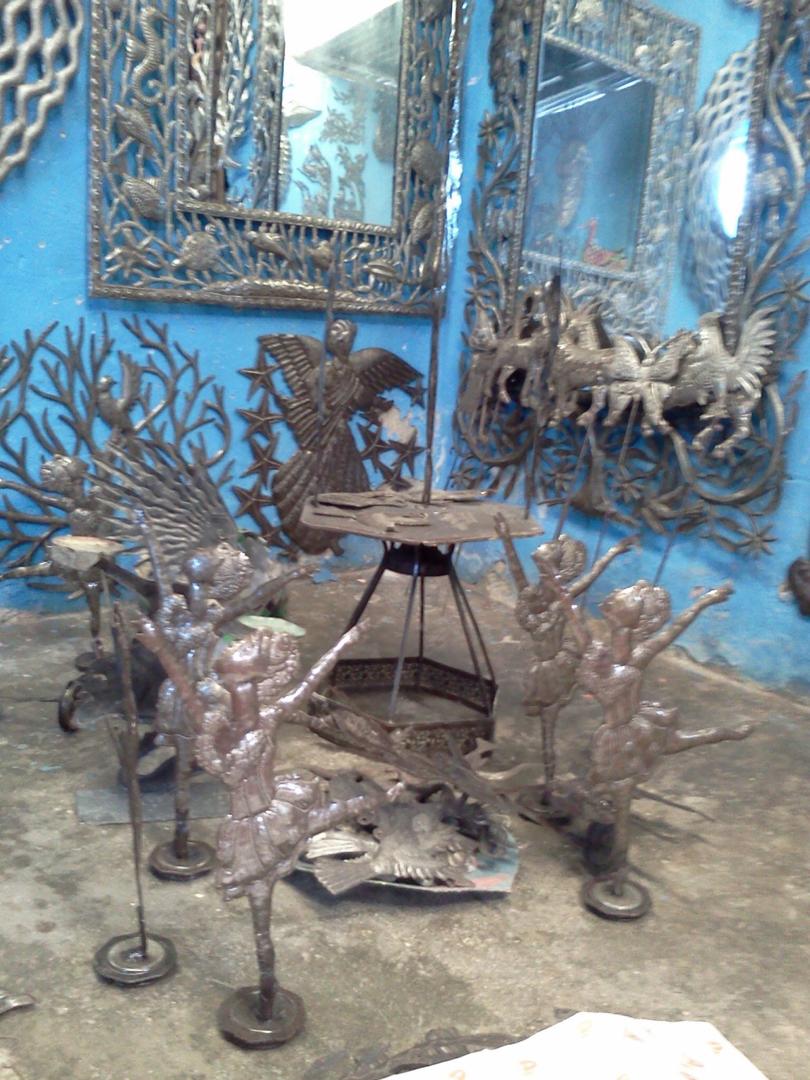
Cut iron works by artists from the Noailles Artistic Village.
Orders, increasingly rare, greatly weaken the artists and craftsmen of Noailles.
In the past, the trade in cut iron generated significant profits for artists and craftsmen, underlines sculptor Jean Eddy Rémy.
Some workshops could generate a monthly profit of 500 to 1,000 US dollars, while those specializing in cutting barrels could generate up to 5,000 gourdes a day.
Additionally, several artists have lost their lives in Noailles in recent years.
One of them was killed on his “motorcycle in Tabarre along with a young colleague, while crossing the street, found himself caught in an exchange of fire between police and gangs… Others left the country,” laments Rémy.

Participants in the First edition of the “Solidarité Noailles” fair at the Hotel El Rancho on May 17 and 18, 2022.| © AyiboPost
Located about 15 kilometers from Noailles, Bel Air perpetuates a rich tradition in the field of textile crafts.
The abundance of Vodou temples has driven craftsmen to design “vodou flags” (drapo vodou) and various objects of worship intended to beautify these sacred spaces.
These artisans handle textiles, boutèy bizango, vodou flags… Objects of worship oscillate between their sacred and artistic/profane dimensions.
Partly thanks to the momentum generated by sculptor Pierrot Barra and his wife Marie Cassaise in the 1990s, Bel Air stood out for its textile craftsmanship, which has become the hallmark of its designers and artists.
Barra, a Vodou priest, started by making ceremonial flags for the hounfor.
Subsequently, he diversified his works by creating more elaborate arrangements with dolls, fabrics, glass, sequins, etc.
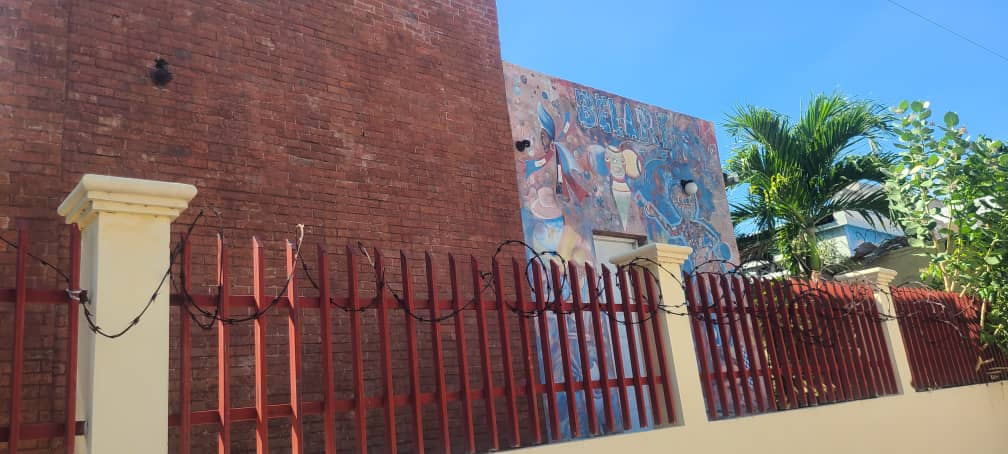
A view of BelArt, a major cultural center in Bel Air dysfunctional due to gang violence in the neighborhood. | © Marie-Gérald Morilus
Pierrot Barra’s works were well-received by museums.
The book by American academic Donald J. Consentino, “Vodou Things: The art of Pierrot Barra and Marie Cassaise,” constitutes valuable documentation on the work of these two artists.
According to Marie-Gérald Morilus, a textile artist from Bel Air specializing in the making of vodou flags and beading, creators in the area are faced with a shortage of materials.
In addition, potential buyers cannot visit their workshops and the incessant shooting generates constant stress which hinders productivity.
“It’s unbearable,” exclaims Morilus. You can barely start working before a cry of the “Men cha” forces you to take cover, because they are shooting at everything that moves.”
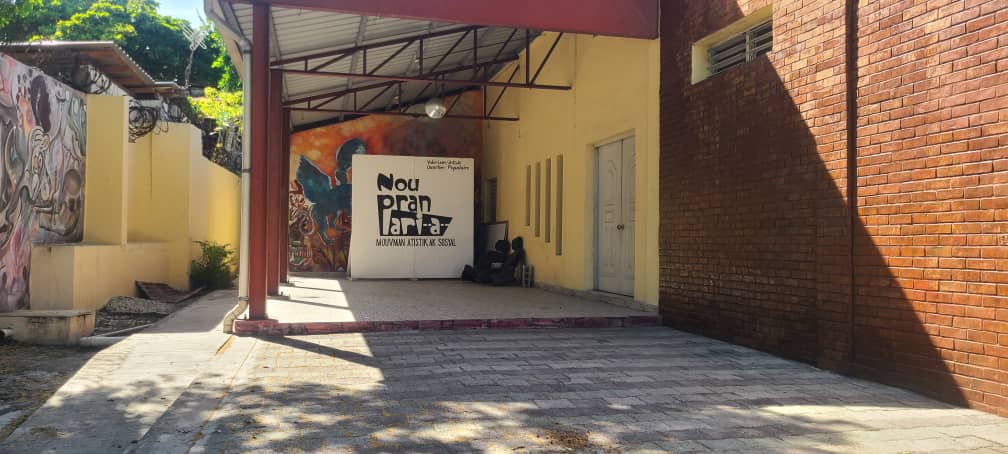
An interior view of the Bel Air Cultural Center, dysfunctional due to gang violence in the neighborhood. | © Marie-Gérald Morilus
Some artists still live in Bel Air.
However, others, like Morilus, see the future outside of this neighborhood.
“The priority, in my opinion, is to allow artists to leave Bel Air to find another place where they can continue to create. It is impossible to create in these conditions,” Morilus poses.
Read also: Bel-Air remains an artist’s village, despite gang violence
The four main artistic communities in the West, namely the artistic village of Noailles in Croix-des-Bouquets, Atis Rezistans on Grand-Rue, the textile and drapo vodou creators in Bel Air, as well as the stone sculptors of la Rivière-Froide in Carrefour, redefine reality and revolutionize the discourse of visual arts in Haiti thanks to their audacity and their unique aesthetic.
Their establishment was stimulated by the tourism boom of the 1940s and the New Deal policy in the United States.
Over time, such collectives have become centers of intense artistic activity, devoting themselves almost exclusively to their own artistic practice. Located in working-class neighborhoods, [they] reinvent social ties within their community.
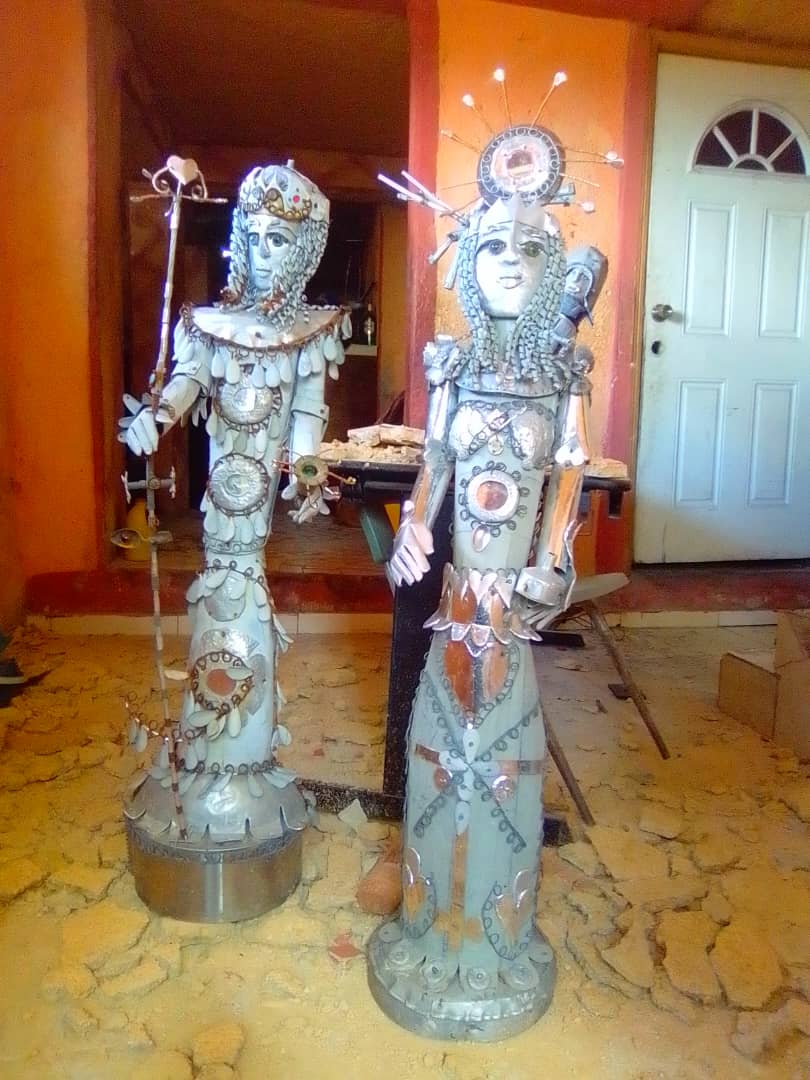
Cracked ceramics bear witness to the ransacking of artist Ricardo Valcin’s home in Carrefour-Feuilles. The sculptures wobble, damaged, unable to stand upright. | © Ricardo Valcin
Sculptor Jean Eddy Rémy, accompanied by other artists and artisans from Noailles, founded ADAAC, which engages in social projects such as psychosocial support programs and the relocation of families that are victims of violence.
Initiatives have also increased on the Grand-Rue side.
André Eugène, Celeur Jean Hérard and Guyodo from Atis Rezistans founded Timoun Rezistans and Timoun Klere, where children come together in a workshop to create. In 2016, artist Lesly Pierre Paul created the “New Vision Art School” with the aim of protecting children from armed gang violence.
Read also: Alarming loss of archives in renowned media outlets in Haiti
In 2017, the works of these children were exhibited in Argentina at Universo Art Kids and in Chicago at the This is it Gallery.
However, insecurity continues to weaken these communities.
“Culture is this country’s calling card,” says Allenby Augustin, Executive Director of the Center for the Arts.
Faced with the disappearance of these communities of artists: Noailles, Rivière-Froide, Bel Air or Grand-Rue, “we must question the extent of the work necessary to reconstitute them.”
The Center for the Arts favored the appearance of the “naïve” movement between 1946 and 1950, giving birth to a multitude of internationally renowned artists.
Today, despite a discreet presence due to insecurity, the Center holds a collection of more than 5,000 works of art and 3,000 archives, constituting a unique heritage in the visual arts in Haiti.
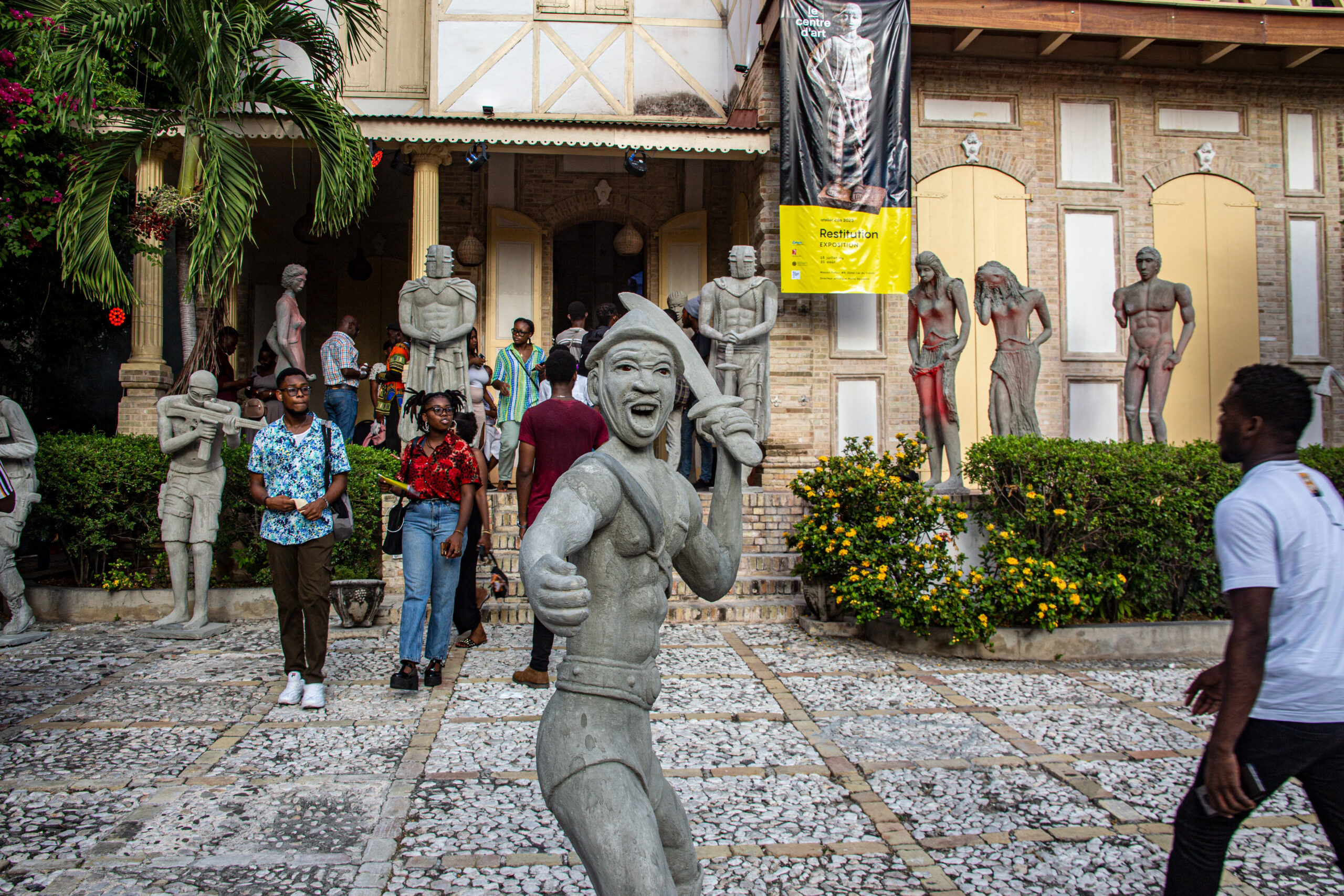
A view of the atmosphere at the Maison du Fort, on the occasion of the 277th exhibition at the Center for the Arts, in August 2023. | © David Lorens Mentor/AyiboPost
Other public institutions holding important collections, such as the National Bureau of Ethnology and the Museum of the Haitian National Pantheon (MUPANAH), are also threatened by armed gang violence.
According to the director, endangered artist communities are an integral part of “the cultural identity of Port-au-Prince and the country.”
Read also: The bandits spare no libraries in Port-au-Prince
As the country’s leading visual arts institution, the Center for the Arts has supported and accompanied artists for 80 years.
“It is essential for the Center to provide assistance to these communities,” concludes Augustin.
This should also be a priority for policymakers.
Cover image: Participants in the First edition of the “Solidarité Noailles” fair organized at the Hotel El Rancho on May 17 and 18, 2022. | © AyiboPost
Watch this AyiboPost report published in 2022 on the alarming situation of artists in Noailles due to insecurity:
Keep in touch with AyiboPost via:
► Our channel Telegram : Click here
► Our Channel WhatsApp : Click here
► Our Community WhatsApp : Click here

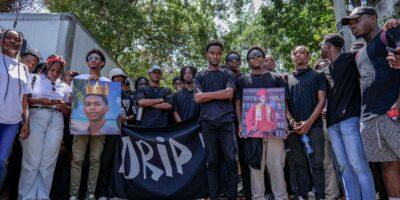
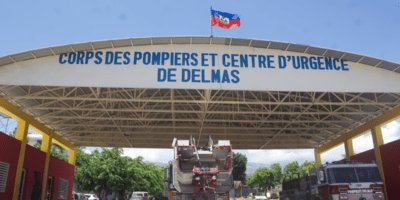




Comments